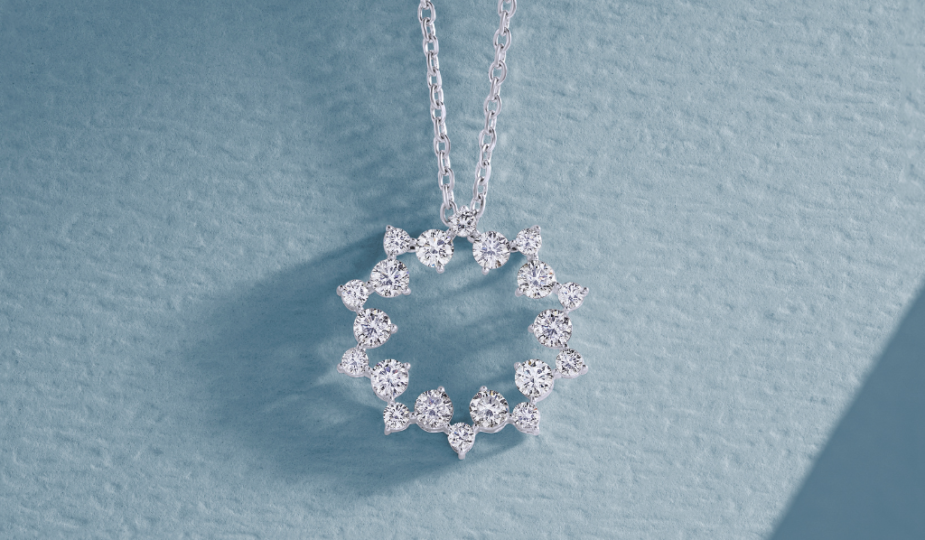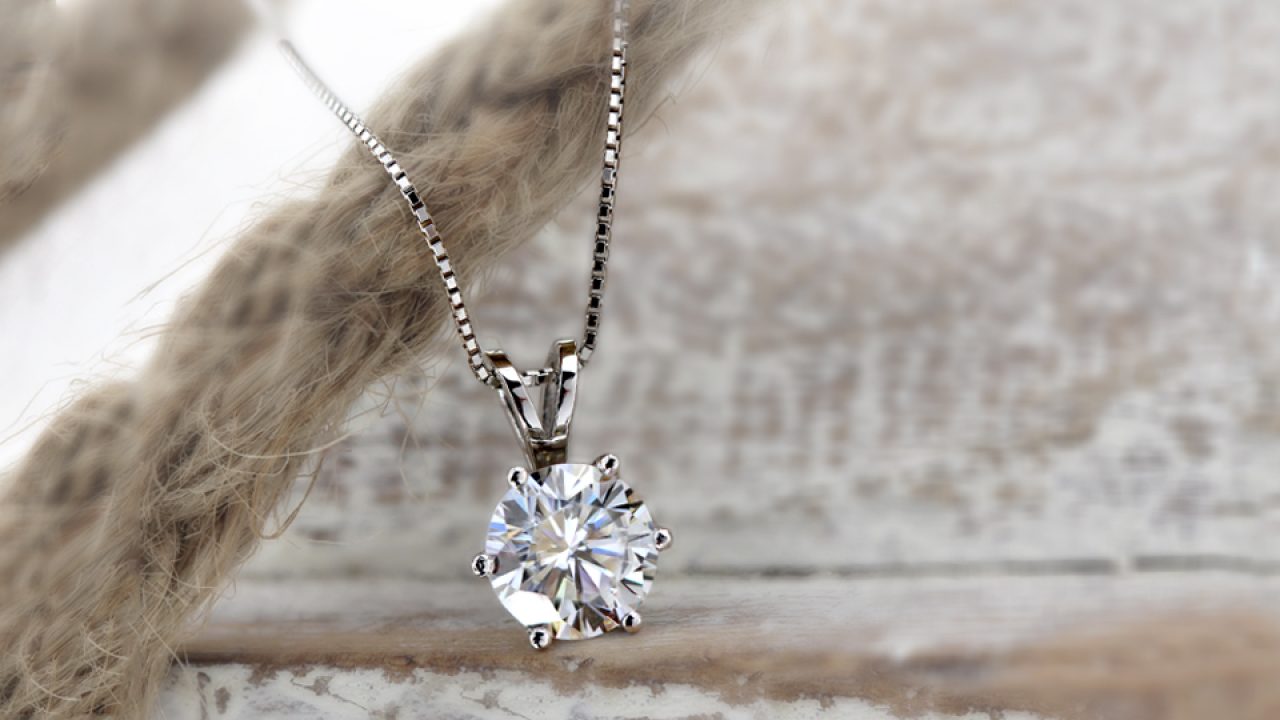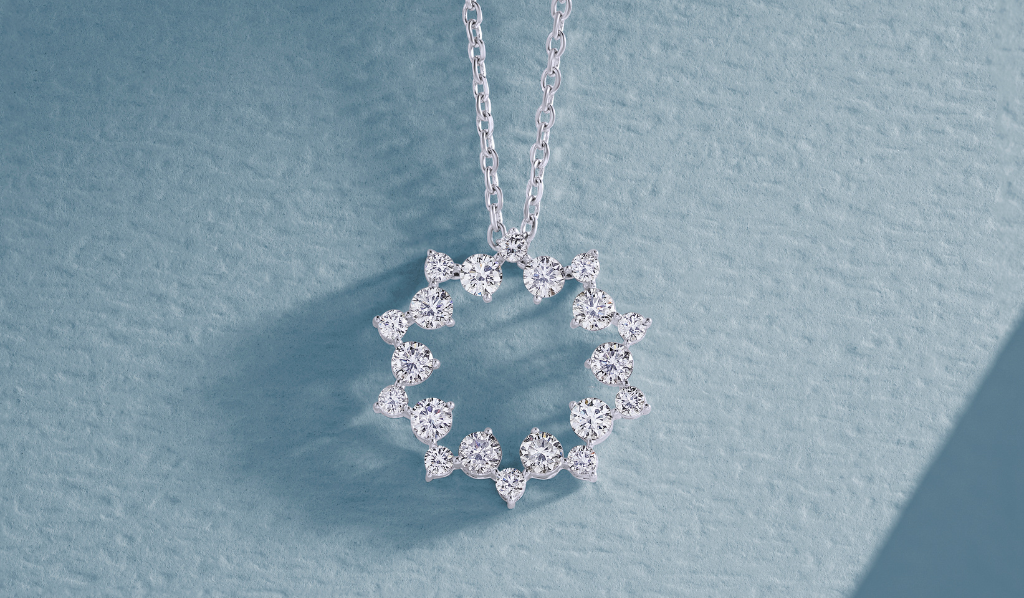
The Ultimate Guide To Diamond Pendants
Diamond pendants have been a popular fashion accessory for their versatility. From over-the-top designs that can capture the attention of every person passing you by to having an understated, subtle elegance— they can be easily added to any look and can complement any outfit effortlessly. If you’ve decided to get yourself a diamond pendant necklace or give one to your loved one, you must consider certain aspects before making the decision.
Keeping that in mind, here’s a comprehensive guide that not only helps you understand what aspects you should consider but also sheds some light on how necklaces and diamond pendants are different, which will help you know what piece of jewelry is best suited for you.

What Are The Differences Between A Pendant And A Necklace?
Many people use the terms pendants and necklaces interchangeably with the perception that both mean the same. However, they’re two completely different pieces of jewelry. A pendant is a small piece of jewelry that can be of different shapes, designs, and colors that can be attached to a chain to wear around the neck. It is versatile as it can also be attached to an anklet or bracelet to be worn around the ankle and wrist, respectively.
A necklace is a whole piece of jewelry, including the dangling piece at the center and the chain, with no detachable parts. It can only be worn around the neck. A necklace is generally designed using several gemstones and a metal that links together the gemstones. However, you can also find simpler necklaces that comprise just a plain chain with no gemstones.
How To Select A Diamond Pendant
When selecting a diamond pendant, it is extremely crucial to consider the 4 Cs of the diamond, which are – color, cut, clarity, and carat. These four characteristics tell a lot about the quality of the diamond and its price. Out of these aspects, the cut should be a priority because a well-cut diamond has a brilliant sparkle, which means it will catch people’s attention and look expensive as well.
Since a pendant is only viewable from a distance because it is worn around the neck, the diamond’s size matters. When it comes to diamond pendants, you can compromise a little on the color and clarity of the diamond. The recommended grading for color and clarity are I or J and SI, respectively. Therefore, you can save some money while getting to opt for a bigger diamond.
What Diamond Shape Should You Choose For Your Pendant?
Some of the most preferred diamond shapes for pendants are princess-cut and oval-shaped diamonds. These shapes work great for a chain that you would want to wear every day. If you’re looking for a pendant that is more apt for special occasions, you can explore fancier shapes such as pear shape, heart shape, or a series of smaller diamonds in a circular layer that gives an impression of a huge round-cut diamond.
While these are some shapes that you can choose from, diamond pendants, much like rings, can also be customized based on your favorite settings. For instance, you can get a pendant made with a halo setting, which comes with a center stone that is surrounded by a layer of smaller diamonds.
Do You Need A Grading Report For A Pendant Purchase?
A grading report gives you details of a diamond’s characteristics. Therefore, when you purchase a diamond pendant, it is essential to have a look at a grading report by trusted establishments such as GIA or AGS. This helps you ensure the diamond has certain qualities and you’re getting what you’re paying for. Grading is carried out using special gemological tools, and when you look for third-party laboratories, you get to avoid conflict of interest.
It is best to avoid shopping for a pendant from sellers who carry out in-house assessments, as this might indicate loose grading. There might even be a possibility that the seller is trying to take advantage of you. Therefore, much like any other diamond jewelry, you should always buy a diamond pendant that is GIA or AGS-certified.
However, it is worth mentioning that certain diamonds may not come with a grading certificate, especially smaller diamonds. Since the cost of getting these diamonds outweighs their value, sellers don’t generally get them graded.

The Benefits Of Diamond Pendants
Diamonds are known to have certain astrological and health benefits. Wearing a diamond pendant is a good way to ensure that the diamond touches your body to deliver these benefits. With that said, here are some common benefits of wearing diamond pendants.
- Some astrologers claim that diamonds can help with bowel disorders, gastric problems, constipation, and sexual disorders. Diamonds are also thought to symbolize good luck and bring prosperity, success, maturity, and good health to the wearer, which is one of the reasons people invest in diamonds.
- It is also believed that diamonds promote mental and physical well-being, and wearing a pendant is thought to be a good way to derive the benefits of diamonds.
- In addition to the astrological benefits of diamond pendants, one major benefit of investing in them is that they can add to your fashion and elevate your style. Diamond pendants are available in a host of designs, and you’ll easily find one that suits your preferences and complements your outfit and looks. Whether you’re into minimalistic designs or love over-the-top stones, they can effectively add to your personality.
From the 4 Cs and shape of the diamond to the metal color and design you consider— the diamond pendant you decide to buy should fit your budget and suit your sense of style. Since they’re popular as jewelry that you can both wear on a daily basis and on special occasions, the market is replete with options in designs, colors, and settings when it comes to diamond pendants. You can wear a diamond pendant even as a status symbol or a sign of prestige, which truly makes diamond pendants worth adding to your jewelry collection.









